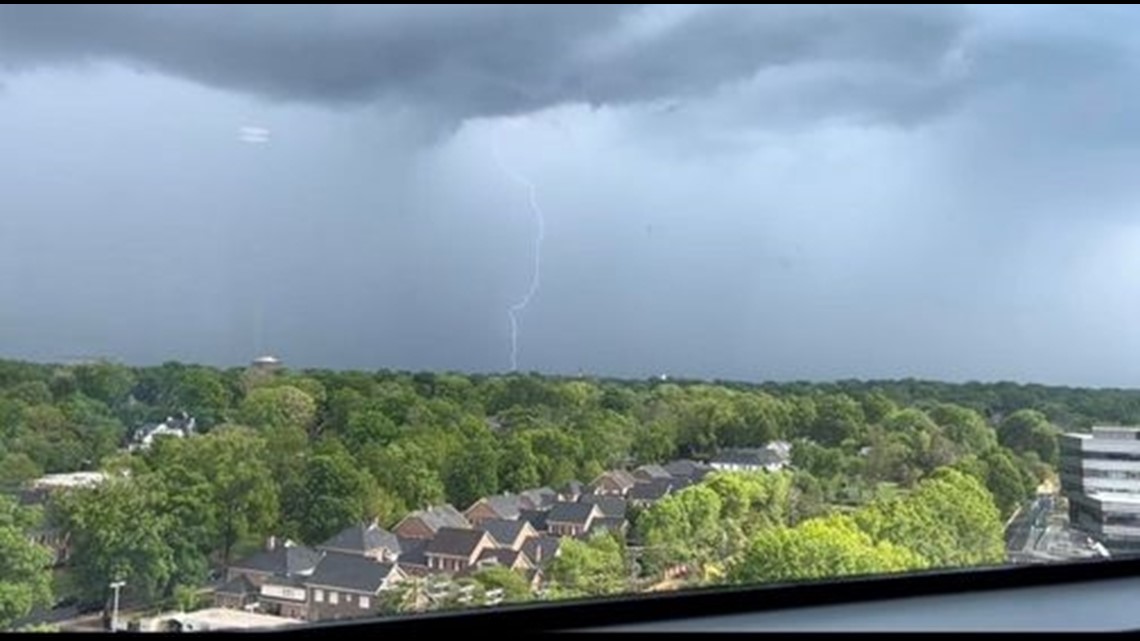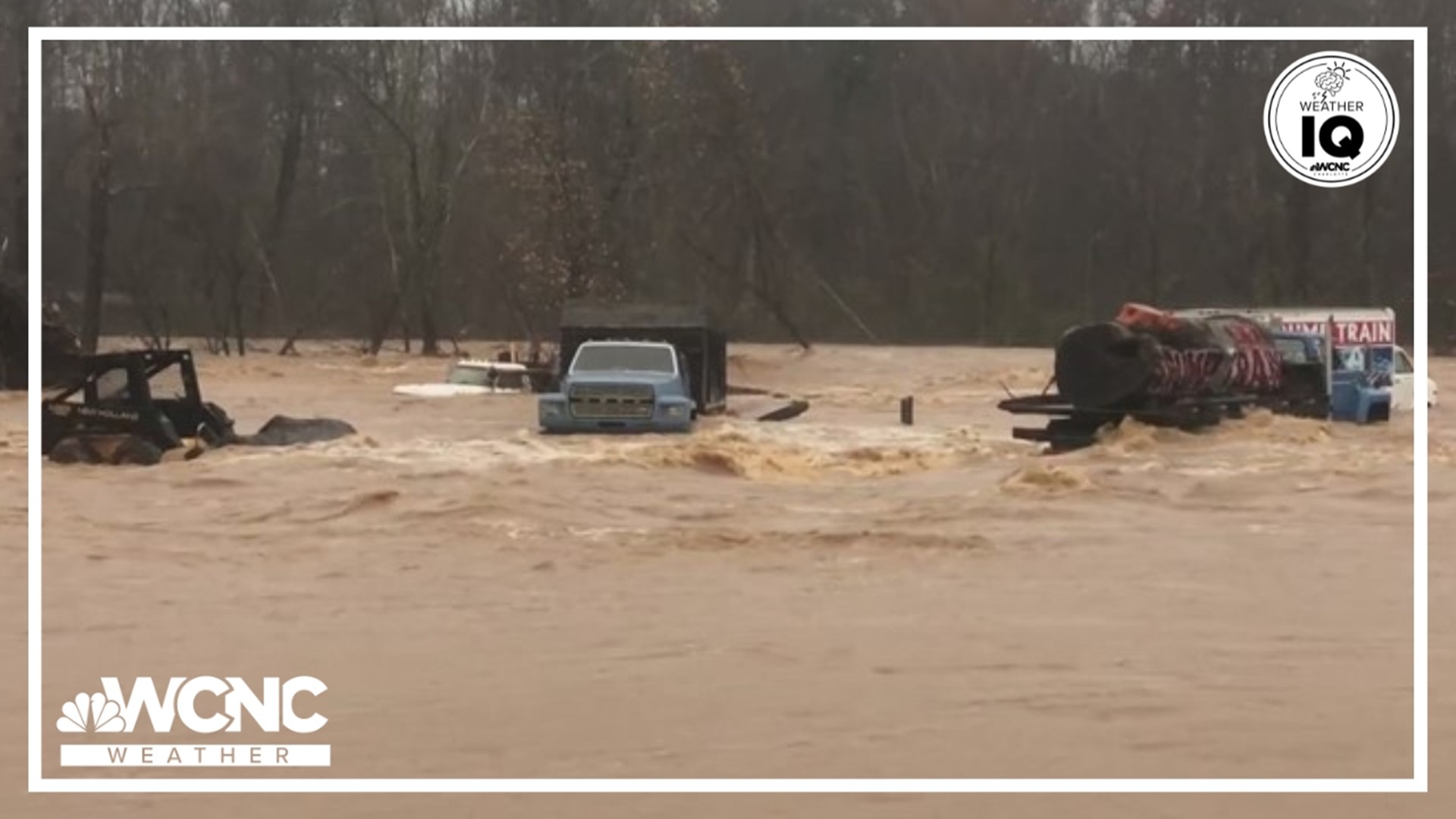CHARLOTTE, N.C. — A strong thunderstorm can bring multiple threats. Dangerous lightning, large hail, flash flooding, damaging winds and even tornadoes.
So for Severe Weather Preparedness Week, here are some facts and stats you need to know about as we head into severe weather season.
Lightning
- Lightning can happen anytime of year in the Carolinas. But 75% of lightning strikes for North Carolina happen in June, July and August.
- Lightning is five times hotter than the surface of the sun. Estimated to be over 50,000 degrees Fahrenheit.
- 80% of lightning deaths are males.
- The image below is a positively charged lightning bolt. These are the ones that can shake your house. These are 10 times brighter, 10 times stronger and 10 times louder than 90% of other lightning bolts. They are also the most deadly.


- Lightning can strike the same place (mainly a tall isolated object like the top of the Empire State Building.)
- Heat lightning is not a real weather term. It is just lightning that is too far away to be heard, getting its name since these storm typically derive from the warm air mass that comes with the warmer months.
Hail
- There were over 6,900 hail events in the United States in 2023. These events caused over $3.5 billion in damage.
- Texas, Nebraska and Kansas had the largest number of hail events in 2023.
- The United States averages over $1 billion in crop damage from hail every year.
- A hailstone is considered severe once it is the size of a quarter or has a diameter of 1 inch.


- A hailstone the size of a baseball, can fall to the surface at speeds up to 100 mph.
- The largest hailstone to fall in North and South Carolina was 4.5 inches in diameter. That’s about the size of a CD.
- The largest hailstone to ever fall in the U.S. was just over 8 inches in diameter. That's about the size of a volleyball.
RELATED: Hail: How it forms and what to know
Floods
- Floods are the most common and widespread natural disaster. They are also the most deadly thunderstorm related event.
- Where two-thirds of all flood deaths happen in vehicles.
- Flash flooding is the most dangerous flooding. This is flooding that happens fast often within three hours when heavy rain exceeds the grounds ability to absorb it.


- Some other causes for flooding besides direct heavy rain: River flooding, tropical systems and coastal flooding, dam breaks/levee failure, snowmelt and/or debris jams.
- Six inches of fast moving water can knock you down, 12-24 inches can float a vehicle and carry it away, including trucks and SUVs.
For the latest weather alerts, download the WCNC Charlotte mobile app and enable push notifications.
Winds
- Whether the winds are straight-line or rotating in a tornado always remember, "wind is wind." Straight-line winds from a severe thunderstorm can cause just as much damage as a tornado.
- Straight line winds can gust over 100 mph and are more widespread.


- A derecho is a widespread wind damage event that can span hundreds of miles long and wide.
- Wet Microbursts account for over 90% of the wind damage we see here in North Carolina. Where dense rain cooled air accelerates to the ground, spreading strong winds in all directions.
Tornadoes
- Tornado winds can range anywhere from 65 mph to over 200 mph. Ranging from EF0 to EF5 of the Enhanced Fujita scale.
- North Carolina and South Carolina have never recorded an EF5 tornado.
- April is the busiest tornado month in the Carolinas. For example, April 16, 2011 was the greatest one-day tornado outbreak in North Carolina History.


- The spin up tornado that forms in a Q.L.C.S. is the most common tornado in the Carolinas. These move fast, form fast and are usually short lived.
- In 2023 the United States had 1,423 reported tornadoes. Only 32 of those were in the Carolinas (North Carolina had 14 and South Carolina had 18).
The more we know, the safer we can be when the weather turns. So stay safe this Severe Weather Season. WCNC Charlotte's weather team is here to keep you Weather Aware.
Contact Chris Mulcahy at cmulcahy@wcnc.com and follow him on Facebook, X, Instagram and TikTok.
WCNC Charlotte’s Weather IQ YouTube channel gives detailed explainers from the WCNC Charlotte weather meteorologists to help you learn and understand weather, climate and science. Watch previous stories where you can raise your Weather IQ in the YouTube playlist below and subscribe to get updated when new videos are uploaded.

